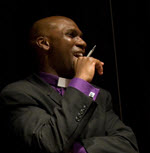What Exactly is Hospice?
My family recently lost a beloved member to cancer. The last days of my aunt’s life were spent at home with her family, under the guidance of a hospice agency. Hearing about their work and the support they gave to Aunt Mary Ellen and her family caregivers made me wonder, exactly what is hospice, who pays for it and how does it work? This first article answers the question: “What is Hospice?”
Hospice is different from traditional medical care because of its philosophy. Hospice care is palliative which is comfort care with a focus on the relief of pain symptoms. Throughout our life, we move through a continuum of medical care that often ends with aggressive “curative” treatments for an illness like cancer. When curative treatments no longer work, palliative care is a wonderful gift. (Jump to Lessons Learned)
For some reason the word “hospice” scares most people. We think of it as giving up on mom, but that is far from the truth. Because hospice is palliative, care encompasses pain relief, hunger, incontinence, all the elements that allow your loved one to keep their dignity through this stage in their life. In fact, taking focus off curing the disease state allows for a holistic focus on the entire person from a physical, social, emotional and spiritual viewpoint.
A coordinated team approach makes treating the entire person possible. And treating the entire person means understanding everything from their ability to handle pain, to the tasks that they want to be performed to maintain their dignity. Each team member has a specific role with defined tasks, These roles and the time each team member spends with the patient, is based on Medicare guidelines for payment. (More about this in the next post: Hospice, who pays for it?)
The Hospice Team:
1. Attending Physician – Physicians who are qualified to follow hospice patients are usually the patient’s primary care doctor. He/she is responsible for working with the hospice nurse, writing orders, adjusting medicines, and when needed, visiting the patient. How involved the Attending Physician becomes is specific to patient needs and family requests.
2. Case Managers (registered nurse (RN) or advance practice nurse (APN)) – The nurse oversees the patient care plan, coordinates team members and reports to the attending physician when a change of status occurs. The nurse generally meets with the hospice patient weekly, but if mom requires more intense nursing care (e.g. cleaning of tracheostomy tube), may visit daily. Expect that nurse care will increase towards the very end of life. Responsible for the patient care plan, the plan clearly states all the do’s and don’ts for the medical/physical, social and spiritual aspects of care. Hospice care moves through stages, so there is constant team communication on the plan.
3. Aides – Hospice aides provide a level of care ensuring dignity and comfort is performed daily. General tasks include: bathing, feeding, assisting with toileting, and/or changing clothes. Aunt Mary Ellen called her aide service a “tune-up”. The aide is critical because they have the most patient contact and will be the first to notice subtle or extreme changes, such as a bed sore. The aide is responsible for contacting the nurse case manager with any changes physical or mental they notice.
4. Social Worker – The social worker monitors and manages the hospice patient interactions with the outside world: Are they active enough to engage the family? Do they want to go outside the home and can they manage it? If mom expresses a desire to go to a movie they might coordinate transportation, or make sure oxygen goes with them. Based on what the patient loves to do, the social worker works with family to make it happen if it has the approval of the nurse and attending physician. These observations and wants expressed by the patient become part of the patient care plan. If needed the social worker will interact with the family around advance care planning.
5. Hospice Chaplain – Studies show 90% of people with a terminal illness want spiritual care. This may be as simple as requesting “holy communion” or as complex as, “Chaplain, I am afraid to die!” Hospice chaplains are trained to provide liturgical duties for all faiths. For example, a Catholic priest is trained to provide spiritual guidance for protestant Christians—unless there is a request for a specific religious chaplain—e.g., a Rabbi.
Lessons Learned:
There are two big misconceptions around hospice:
- The first is that hospice takes over and the family has no more rights. The family is an integral part of the team. No steps are taken without the buy-in and support of the family. For example: If a family member notices mom in great pain, they will call the nurse. The nurse evaluates the pain and lets the doctor know the results. The doctor may recommend morphine at this time but it must be agreed to by all parties including the family.
- The second is that all hospice care is 24X7, at home. There are four different types of hospice care: General Inpatient, Routine Care, Continuous Home Care and Respite Care. 90% of all hospice care falls under the Routine Care level, not Continuous Home Care. The last article in the series details the four care levels and how hospice as a business works.
- Family caregivers: don’t be afraid to reach out with questions. My cousin shared that at times they felt like they were a day behind in understanding how to care for Aunt Mary Ellen. For example, it became difficult for Aunt Mary to take a certain medication and it was 24 hours before they knew to put the medication in yogurt.
This hospice series is dedicated to Mary Ellen Afflitto. Wife, mother, sister, aunt and friend with the most incredible upbeat attitude and wicked sense of humor. She is missed greatly and I am so grateful she was my aunt.
With thanks to my collaborator on the Hospice series, Victor Hudson
 Victor Hudson, Jr., is an ordained minister and church planter. He served in the United States Marine Corps and worked for Pfizer Inc. He currently works at Embracing Hospicecare out of Wall, NJ. He holds three masters degree, one in gerontology from the University of Southern California, an MBA from Regent University’s School of Business and Leadership, and a masters degree in religion from Liberty Baptist Theological Seminary. He is the father of two wonderful adult children, Kieya and Corey, and a proud grandfather of three boys, Javon, Jordan and Jacob. He lives in New Jersey with his wife, Yvonne.
Victor Hudson, Jr., is an ordained minister and church planter. He served in the United States Marine Corps and worked for Pfizer Inc. He currently works at Embracing Hospicecare out of Wall, NJ. He holds three masters degree, one in gerontology from the University of Southern California, an MBA from Regent University’s School of Business and Leadership, and a masters degree in religion from Liberty Baptist Theological Seminary. He is the father of two wonderful adult children, Kieya and Corey, and a proud grandfather of three boys, Javon, Jordan and Jacob. He lives in New Jersey with his wife, Yvonne.Disclaimer: The material in this blog is for educational purposes only. It is not intended to replace, nor does it replace, consulting with a physician, lawyer, accountant, financial planner or other qualified professional.
Jump To Top


Hi Deb,
This is so relevant and still needs so much education. In my experience I have also seen people gearing the “h” word because it almost seems like a death statement! When I tour family members or talk to them I m asked, “…so I just wait for my dad to go and not do anything”? These are the common misconceptions. Another point I always remind my family members also is that nothing is written on stone here. They can always revoke consent if they feel otherwise.
Hi Saswati,
Thanks so much for your comment. Yes, the “H” word is still very scary for people, but as you said, nothing is written in stone. The ability to work with a team of people who understand this life stage and who consider it an honor to work with your family, is something I see as a gift.